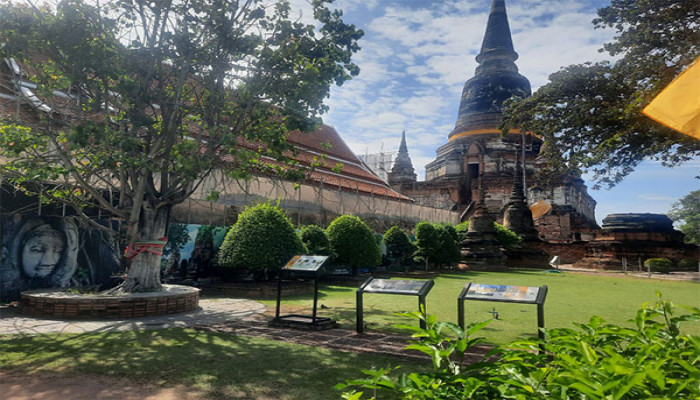Thailand also has Ayodhya, where kings are named after Bhagwan Ram
- In Reports
- 04:05 PM, Nov 30, 2023
- Myind Staff
Just like the famous Ayodhya in Uttar Pradesh, there's also a place called Ayodhya in Thailand. But here's an interesting twist – not only is the place named Ayodhya, but the kings here also have the title of Ram in their names. It's an old tradition they've been following for a long time, showing how important the title Ram is in their history and culture.
The Ayodhya in Thailand is called "Ayutthaya," and it has a special dynasty. In this dynasty, every king is thought to be like Ram. This tradition is a big part of their culture and history, showing how much they value the connection with Ram in their royal line.
Dr. Suresh Pal Giri has been teaching in Thailand for 22 years. He said, “I teach in a religious university in Thailand. The land on which you are standing is a part of the missing link of India. For some years, it was called Thailand, it is genetically Hindu, and later with time, elements of Buddhism kept coming into Hinduism and it got mixed.”
He said, “The similarity between India’s Ayodhya and Thailand’s Ayodhya is that we have not forgotten our ancestors, our existence and our traditions. Even after so many years, we still believe in Shri Ram and worship him in Thailand as well as in India. The king here has also built some Hindu temples in this city. Here, 35 kilometers away from Ayutthaya, there is a temple of Lord Vishnu, Brahma Ji, and Shankar Ji.”
There's a famous city in Thailand called Ayutthaya. The kings there were known as 'Ramatibodhi' or "Bhagwan Rama." This title is connected to the story of Ayodhya, mentioned as Bhagwan Rama's capital in the Ramayana. Ayutthaya served as the main city for Siamese rulers from 1351 AD. Unfortunately, in 1767, Burmese forces looted and almost completely destroyed Ayutthaya, marking a tough time in its history.
The Thai religious text, known as Ramkeen, holds a status equivalent to the Thai Ramayana. A comparative analysis between this text and Valmiki Ramayana has been drawn by Ramanujan, the author of '300 Ramayana.' Notably, Ramkeen is believed to have been freshly composed by King Rama I in the 18th century. In this literary work, the central antagonist, Thotsakan, bears a resemblance to Ravana from the Hindu text. The narrative centers around the ideals of Rama embodied in the heroic character Phra Ram.
Despite the rich cultural and historical significance, the remnants of Thai Ayodhya now extend across a substantial area and hold the distinction of being a UNESCO World Heritage Site. The expansive spread of these remains attests to the historical depth and importance of this cultural site in Thai heritage.
Image source: ANI







Comments